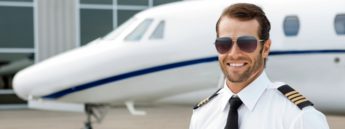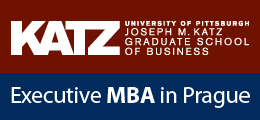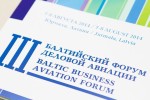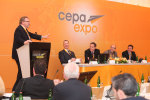Baltic Aviation Academy Maps the History of Concorde
While talking about the Concorde many words come in handy while describing it. Magnificent, innovative, outstanding technology, supersonic, and many more. But I think we could all agree that Concorde truly has been a state of the art work. So how come such achievement of the humanity has been “sitting on the shelf” for more than 10 years already?
The birth of the Concorde
The very first supersonic flight has been performed back in 1947 by the USA air force jet Bell X-I exceeding Mach I level. From that day, aviation world started developing the idea of the creation ofcommercial supersonic aircraft to transport passengers faster than sound. The main efforts have been made by the French and British governments and scientists. That’s why in 1962 both countries agreed to co-operate on a joint study for the development and manufacturing of the supersonic airliner. The agreement set the stage for the construction of the two Concorde prototypes followed by the two preproduction aircraft, as well as two airframes for static and fatigue testing. The first flight of the Concorde prototype has been planned in 1966 and the cost of the development were estimated at £150 to £170m.
However, the total expenses…. exceeded £2,000m.! Regardless of that, project continued and the first prototypes 001 by the French and 002 by the British has only been built in 1969.
The state of the art machine
Concorde is known as “the first one” of many things.
First of all – wings, which are the key to the aerodynamics. The cruising speed during the airplane development changed from 300mph (on propeller aircraft), to 600 mph (subsonic jets) and up to 1300 mph, which is the speed of the supersonic aircraft as Concorde was. Accordingly, the degree of sweepback changed, making it 70° on a supersonic aircraft. In addition, wings became thinner in relation of their chord. Why? Simple, the faster an aircraft moves, the more dart-shaped it should be. And since the Concorde is the supersonic aircraft, the design of an aircraft speaks for itself.
Material. The tricky part was to choose the right material to make the airplane. The reason of that was the high temperature which aircraft would reach during the supersonic flight. It was expected that the nose of aircraft would be at 127 C degrees and the tail at 91 C degrees. For that reason many tests and experiments have been done, until the copper-based aluminum alloy has been chosen.
The nose. If you ever saw a picture of the Concorde (or even the real aircraft) you probably noticed, that it had a “moving nose”. “The anhedral slender delta wing with its ogival leading edge was the result of a huge amount of the wind tunnel testing. This led to aircraft having a high angle of attack. This way it has been hard for pilots to clearly see through the windows during the take offs and landings. This is why the moving nose has been created. During the flight phase nose would be lowered from 5 up to 12,5 degrees.
And of course the speed. Concorde is known as the first airliner moving faster than the bullet. Faster than the sound. Actually 2 times faster than the sound, or in other words exceeding the Mach 2 speed.
Pilot training for the Concorde
There is no need to say, that every pilot’s dream at the time has been to control the Concorde. But obviously only a few lucky ones had a chance to make this dream come true. The candidates to pilot this aircraft usually have been chosen by the airlines themselves. The admission process has been harsh since it was not only insanely expensive, but also required the best performance skills.
If we are used that today type rating training takes about 4 weeks to complete, so the conversion course for the Concorde took up to five months. First six weeks have been spent in a classroom learning the theoretical part. It should be noted, that comparing to today’s conversion or type rating training, students learned not only the theoretical methodology, but also many things based on the practice and experience. Concorde at that moment had no previous history or experience, just plain information about the aircraft and its systems from the manufacturers. Of course there had been systems similar to other aircraft, but still, let’s face it – it has been a first supersonic aircraft.
Once the ground training was completed, the training continued in the full flight simulator. Yes, there were two of them: one in Paris one in Filton. The simulator was pretty much the same as today; it had the full motion and simulated various weather and flight conditions. The last part was the flight training with the real aircraft. Can you imagine stepping onto the aircraft which is not only brand new, but brand new in technological way, the one that nobody else flew before, but you will be one of the first ones?
Route supervision. The interesting thing of the training was that the first supersonic flight was being conducted on the first trip, obviously with supervision of the instructors. The entire training leading up to the supersonic flight was being conducted in the full flight simulator in order to calmly experience how the aircraft behaves during the supersonic flight. During the route supervision flights, crew learns the tricks peculiar to getting Concorde away on time, to fitting it into the air traffic control system and other important flight aspects. Seven round trips are required in order to fly passengers unsupervised. In total, 23 pilots have been trained as Concorde pilots, including one female pilot.
On March 2nd 1969 the prototype 001 has been rolled out of the hanger in Toulouse for its first flight. That day started a new era of the aviation, shrinking the world and bringing people closer to each other. That was the day Concorde started its glamorous life. Or at least everybody thought so…
Source: BAA
Publishing or copying the content of AVIATION Times without a written electronic permission is strictly forbidden. If you have any information, tips, videos, photos or your press releases for us contact us at news@aviation-times.aero.
AVIATION TIMES © Copyright 2012 - 2025







